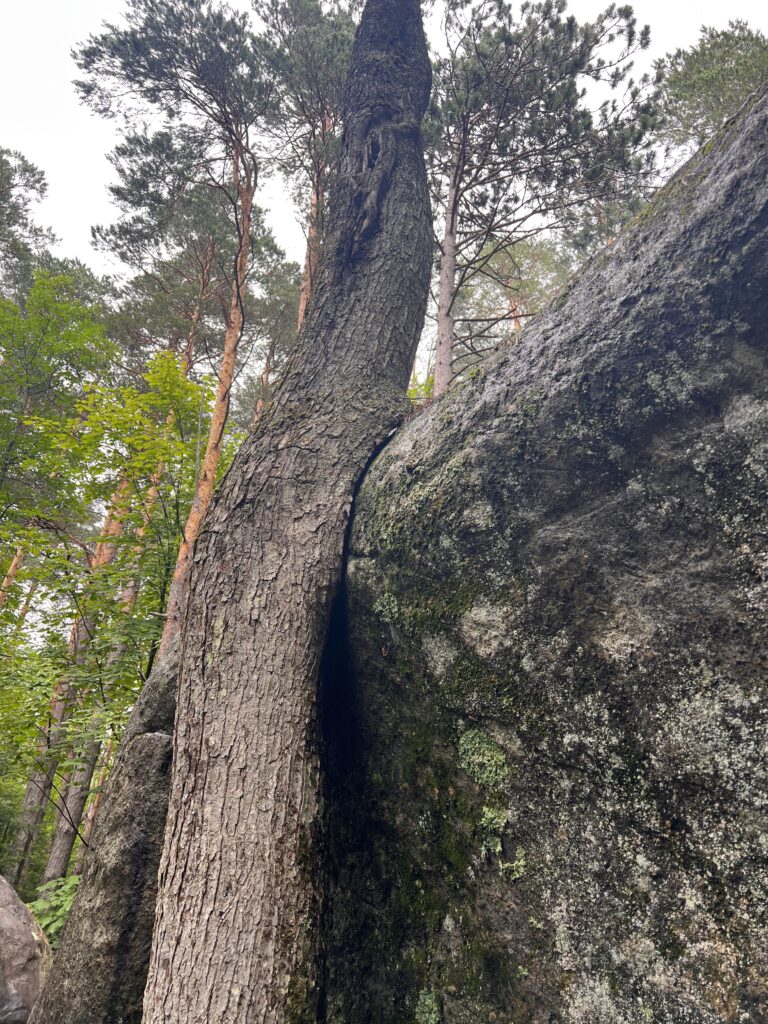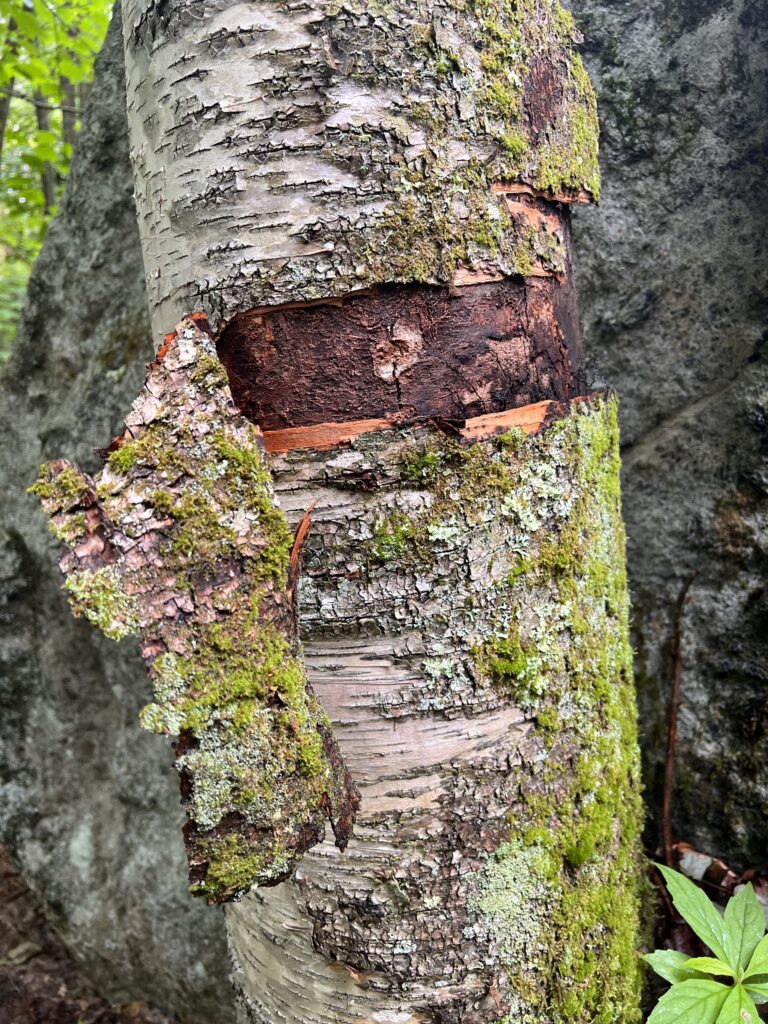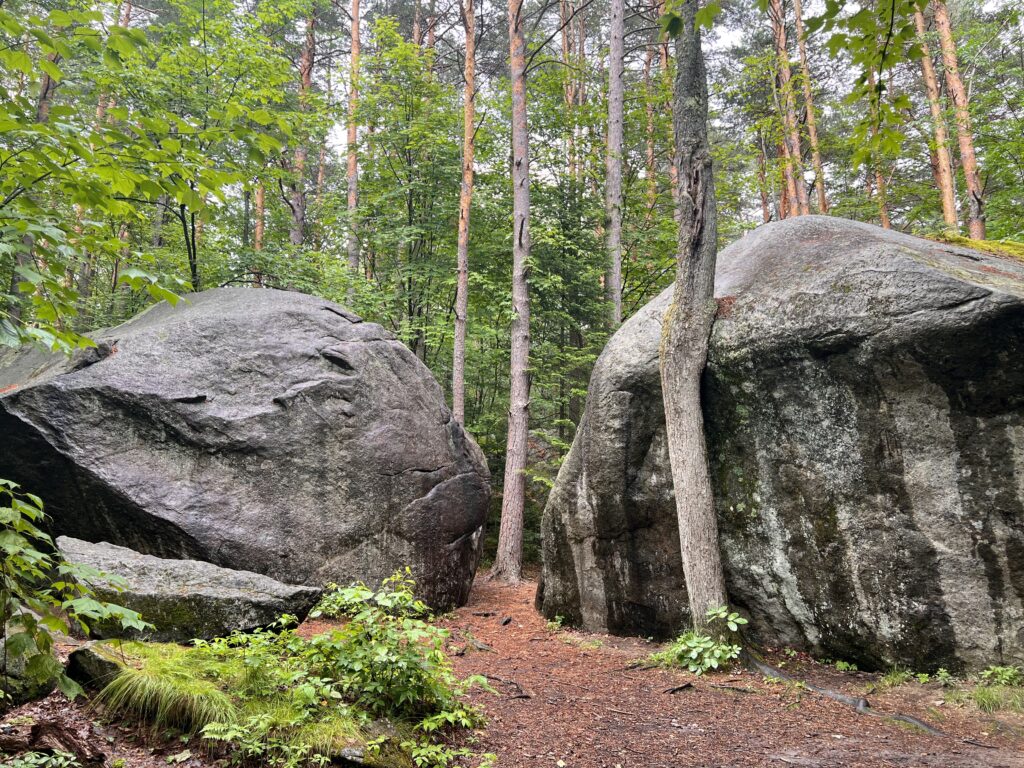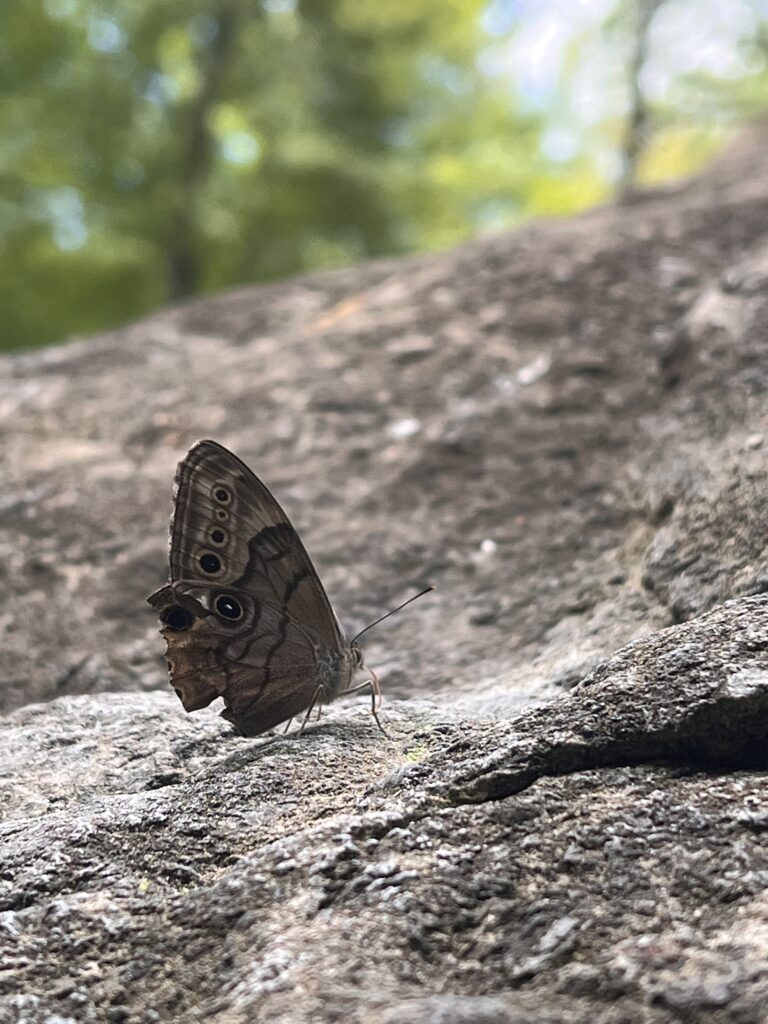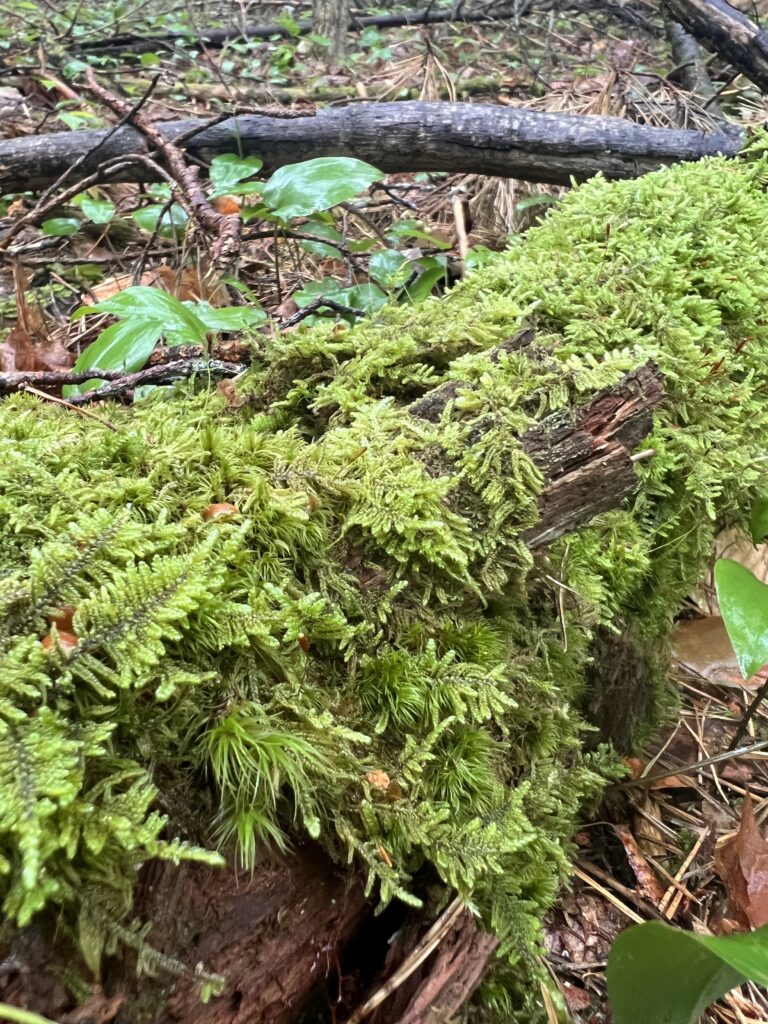Grey skies, rainy all day, low sixties
I returned home for the week, as I had a couple days off from work, so I had to switch the spot I’m using for this entry. I am currently at Mckenzie Pond, which is located in Ray Brook, New York. This is a place I come to quite frequently due to the boulders. This spot is listed over and over again in Adirondack rock climbing guide books as one of the best bouldering spots in the Adirondacks. For those who may not know, bouldering is a form of rock climbing that doesn’t use rope, but rather crash pads at the base of large boulders.
Today there is no one here, which makes sense as the rock will be wet for a few days due to intense rain. but it makes the perfect day to do some exploring as I won’t have to work around other visitors!
I am always amazed at the size of these rocks, which are just off the side of the road but hidden in a dense forest. When the pathway opens up, the ground is clear but covered in organic matter like dried leaves, pine needles, tree bark, and sticks. Some of the rocks are covered in moss, but what really strikes me though is how the rocks and plants have come to coexist in this spot. On one boulder a small tree is growing atop it. Many trees that grow near the boulders are curved in spots where the rock juts out. At the base of the rocks are small grasses and plants, in some of the cracks in the rock, it appears the same species grow from the top as well. I think it was my senior year of high school when in my environmental science class we learned about the incredible strengths of plants. It isn’t something I’ve just admired in this location, but also on the bald rock face of many mountains in the Adirondacks, how small little trees or plants appear to grow despite all odds.
The question I chose to explore is “why/how are boulders present in the Adirondacks”
I chose to research this because I’m amazed and curious about how these huge rock formations can so subtly exist in the forest! If I wasn’t a rock climber I wouldn’t know they existed. We focused on the story of how the Adirondack mountains and Green mountains formed a couple of weeks ago, but I’m really interested in how these rocks came to be (and when!).
My research found that the boulders that occur in the Adirondacks in unexpected places (like the summit of Mt. Marcy and “otherwise rock-free meadows”) are also the by-products of glaciers! The official name for these rocks are “erratic” which is “a rock of unspecified shape and size, transported a significant distance from its origin by a glacier or iceberg and deposited by melting of the ice”. I also learned that the size of these erratics range from pebble-size to larger than houses! They are also usually a different composition than the rock (bedrock or sediment) that they are deposited upon.
The summit of Marcy was covered by ice in the last ice age, so it makes sense geologically that there are erratics on it’s summit. Before the history of these rocks were discovered, it was thought that the land was completely covered by ocean and the boulders floated to where thy are now. Glacial eratics could be carried for HUNDREDS of miles and the term comes from the Latin “errare” meaning “to go astray”.
Erratic rocks essentially prove that rocks are not static objects, they constantly change, but we often don’t observe or take notice because these changes occur in geologic time. You can’t find fossils in the Adirondack mountains but glacial erratics almost serve as a substitute!
Here are the sources I used for research:
https://www.adirondack-park.net/history/geological.html
